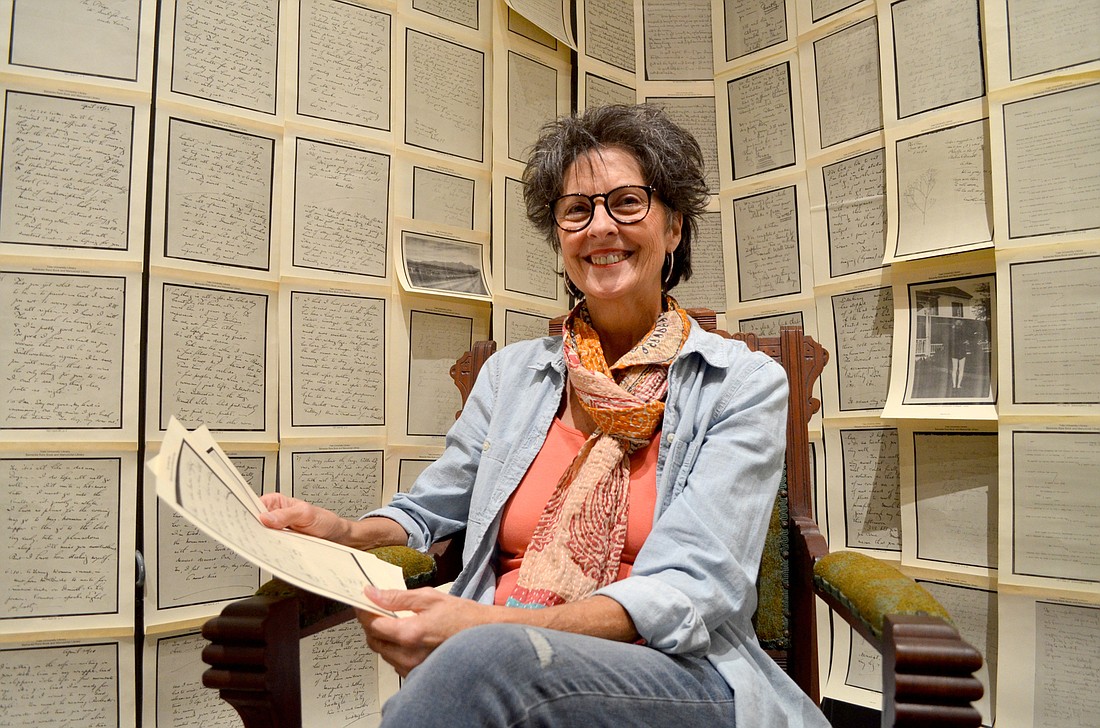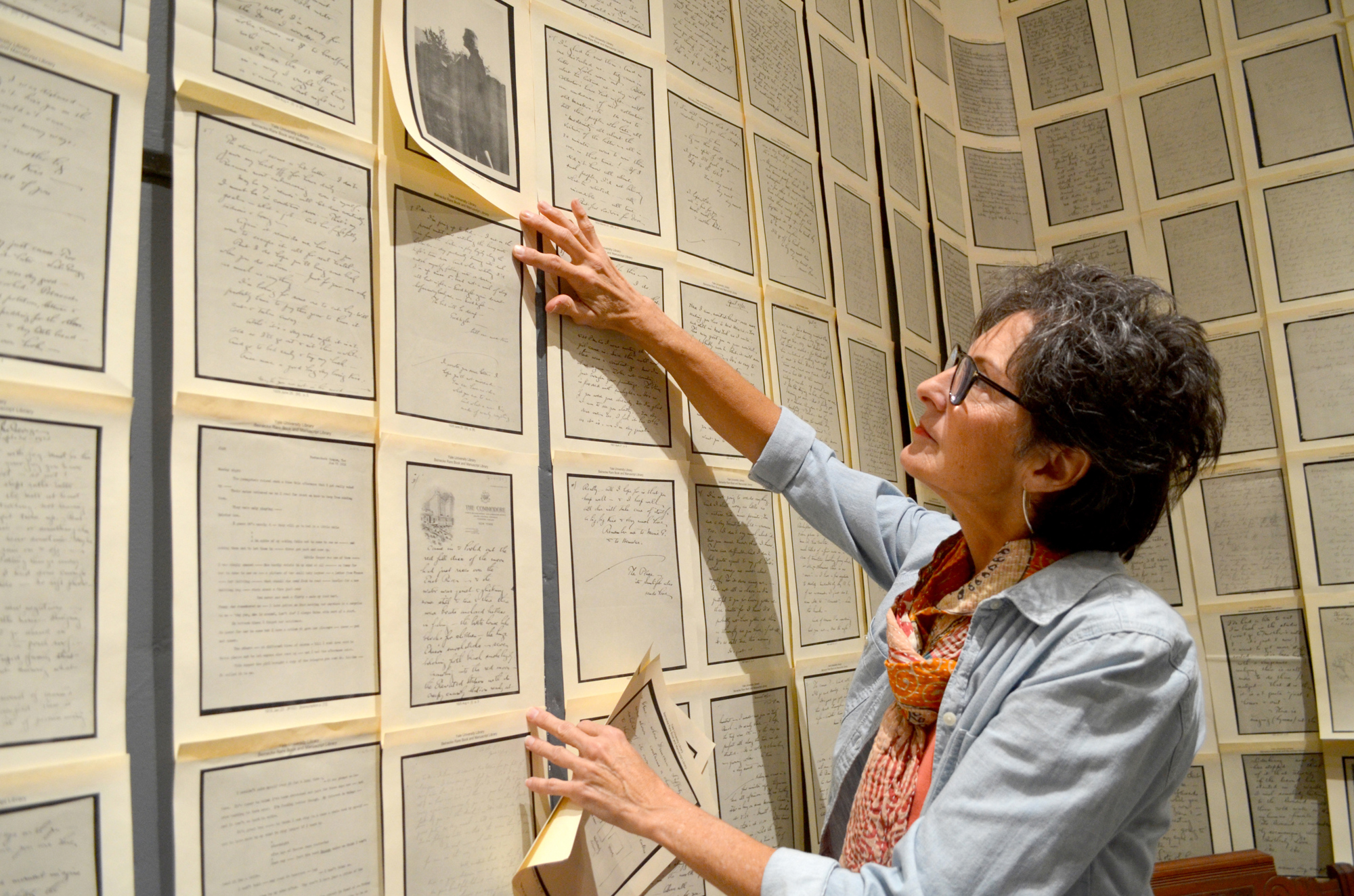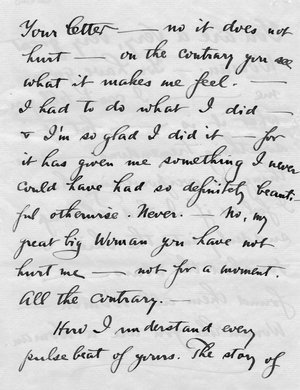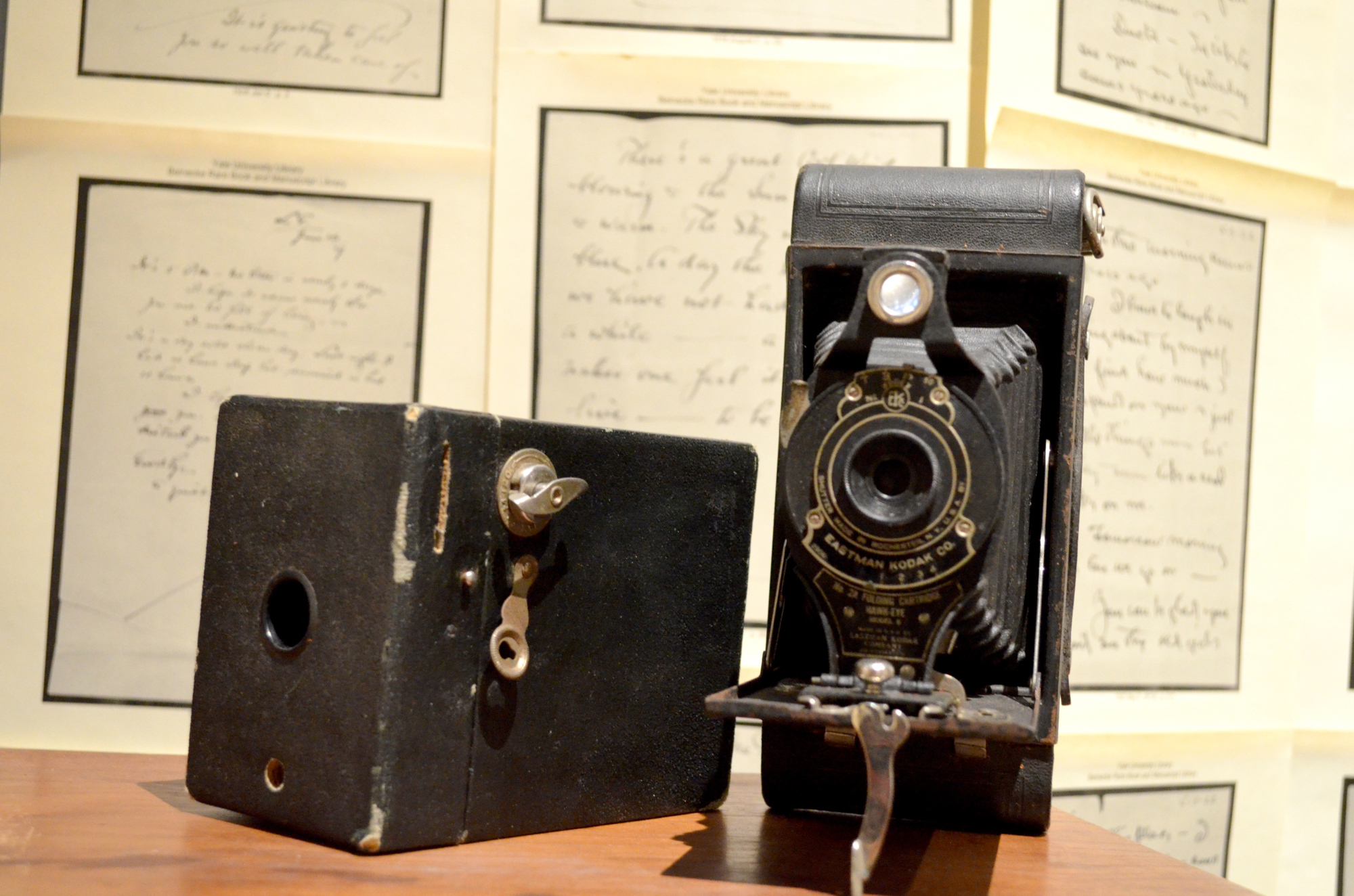- May 12, 2025
-
-
Loading

Loading

There are long-distance relationships, and then there’s Georgia O’Keeffe and Alfred Stieglitz.
O’Keeffe was a painter, most famously known for her modernist renditions of skulls, flowers and New Mexican landscapes. Stieglitz was a photographer, publisher and influential New York City gallery owner. They were married for 22 years.
But the majority of their married life — 17 years — was spent apart. She at her ranch in New Mexico and he in New York City.

Despite the distance, the couple managed to remain close, exchanging thousands of love letters. From opposite sides of the country, they wrote one another up to three or four times a day, with some correspondences reaching as long as 40 pages.
From their introduction as professional acquaintances in 1915 through their romance, marriage and ultimately Stieglitz’s death in 1946, the two exchanged more than 25,000 letters.
This fascinating love story is the subject of artist Grace Howl’s upcoming exhibition, “Together and Apart: The Love Letters of Georgia O’Keeffe and Alfred Stieglitz.” Opening Thursday, Nov. 17, at Alfstad& Contemporary, the installation will immerse visitors in the unique relationship and mutual admiration of two icons of the American art world.
Howl first developed the idea for the installation in 2013, when she discovered a published collection of the letters. She was fascinated by the rare insight into the personal lives and relationship of the artists. Immediately, she knew she wanted to create an installation.

“Whatever it was going to be, I wanted it to be an immersive experience,” she says. “I became absolutely engrossed with their stories. It takes me forever to install this, because I get caught up in reading them. I want people to experience that — to be overwhelmed and surrounded by their love.”
The installation features more than 2,500 letters, one from each week they wrote one another, printed on aged paper for a vintage effect. Inside the gallery, the letters cover all four walls from floor to ceiling, and in the center of the room, a chandelier of love notes dangles from the ceiling, inviting visitors to read them and delve into the artists’ lives.
It’s an intimate exhibition, made all the more personal by the fact that the notes are handwritten. Their writing is reflective of both their artistic styles and personalities. O’Keeffe’s script is dreamier — flowing and airy — while Stieglitz’s dark, crisp penmanship reads firm and decisive. Contained in the letters are poetic confessions of heartsick yearning and the minutiae of their everyday lives. No detail was too small.

In one letter, Stieglitz details his food order. He even includes a copy of the menu. In another, he sends a drawing of a diagram showing O’Keeffe where her work was placed in his gallery.
“Just thought you’d like to see where you were hung,” he writes.
O’Keeffe sent boarding passes and descriptions of New Mexico’s picturesque landscapes, which became the defining fingerprint of her artistic style. The letters show not only their love for one another, but they also reveal each as the other’s biggest fan, critic and source of inspiration.
“My takeaway is that O’Keeffe and Stieglitz each saw things differently, through their own lenses,” says Howl. “But I was really drawn to their admiration for each other. I didn’t find a letter without some sort of term of endearment. Her nickname for him was Duck. They even coined their own terms — ‘A kisslet for you, my love.’ She would leave him notes in his pajama pockets. How romantic is that?”
To fully immerse viewers into the experience, Howl’s installation also includes antique furniture in re-creations of the artists’ respective bedrooms, where they spent so much time reading and writing to each other. Stieglitz’s is in the northeast corner; O’Keeffe’s is in the southwest.

Howl also will add embellishments — cattle bones she gathered from a ranch in Bradenton, photos, cameras like the ones Stieglitz might have used and other bits of memorabilia.
For her, the installation is an ode, not only to love, but also to the lost art of handwritten letters.
“If this happened today, it would have to be a collection of texts and emails,” she says with a laugh. “There’s just something so intimate and special about a handwritten letter. It’s kind of like voyeurism, but in the most romantic way. I hope people are enthralled the way I am reading these, and they feel a connection to these two spirits.”